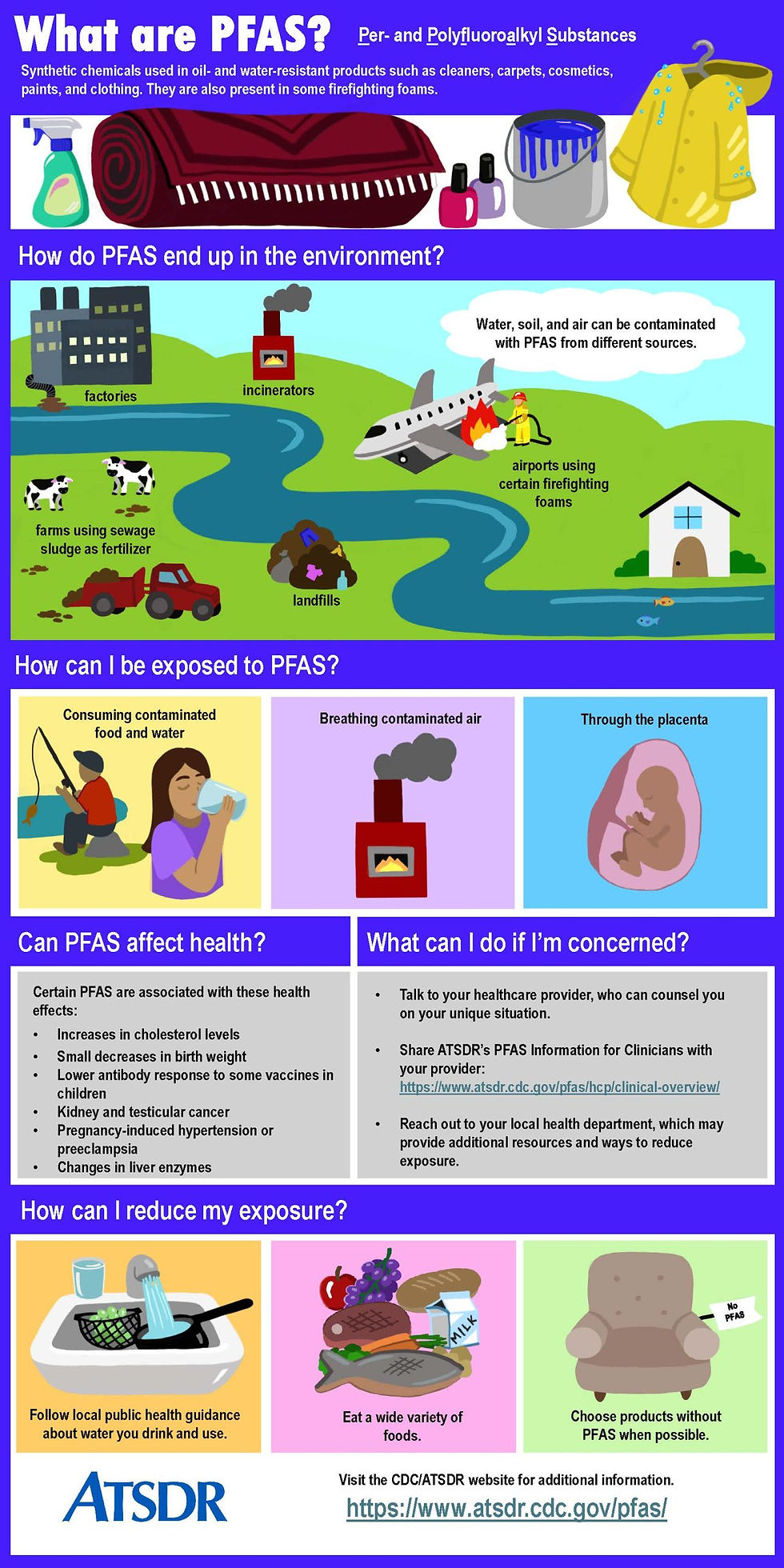PFAS: What It Is, Where It Shows Up, Why It Matters, and How We’re Testing
- Ark River Coalition
- Sep 22
- 2 min read
What is PFAS?

PFAS (per- and polyfluoroalkyl substances) are synthetic chemicals used since the mid-20th
century for their water-, oil-, and heat-resistant properties. They appear in certain firefighting foams, nonstick coatings, stain-resistant textiles and carpets, some food-contact materials, and industrial coatings and plating. They’re often called “forever chemicals” because many persist in the environment and some can travel widely in water.
Where is PFAS found?
PFAS can migrate from products and industrial uses into air, dust, soil, surface water, and groundwater via wastewater discharges, stormwater runoff, and landfill leachate. Once in a watershed, concentrations can vary by location and season.
Potential effects
Not all PFAS behave the same. Some are mobile and persistent; some can accumulate in people and wildlife. Studies associate certain PFAS exposures with changes in cholesterol, immune response, liver and thyroid function, and pregnancy outcomes. Risk depends on which compounds are present, at what levels, and for how long. Local data helps communities understand patterns and focus prevention and cleanup. (General background summarized from agency and academic literature.)
The Coalition’s 2025 PFAS Snapshot
The Arkansas River Coalition Board approved the purchase o
and is starting a focused surface-water sampling effort across Sedgwick County to establish a current baseline. This effort is intended to complement, not duplicate any currently running program.

Our laboratory partner: Cyclopure
We’re using the Cyclopure PFAS testing lab and Water Test Kit Pro. The kit captures PFAS on a DEXSORB®-loaded extraction disc at the sampling site, so we ship the disc—not bottles of water—back to the lab. Cyclopure analyzes 55 PFAS analytes, including all 40 compounds in EPA Method 1633, with a stated limit of quantitation of 1.0 parts per trillion (ppt). The technology is based on cyclodextrin (plant-based) adsorbents developed with NIEHS support and designed for rapid, point-of-site extraction.
What results will show
We’ll publish a map and table for each site listing the PFAS compounds analyzed, detections (if any), and reporting limits, plus a brief methods note and limitations. If patterns suggest a hotspot or likely source, we’ll share the data with appropriate partners for follow-up.

What this snapshot won’t do
One round is a time-specific view; PFAS levels can vary with storms, season, and upstream activity. Findings are a baseline to guide where trend monitoring or additional analyses may be useful.
How you can participate
Volunteer for field teams (no prior experience needed).
Details and sign-ups: ArkRiverCoalition.org.



Comments